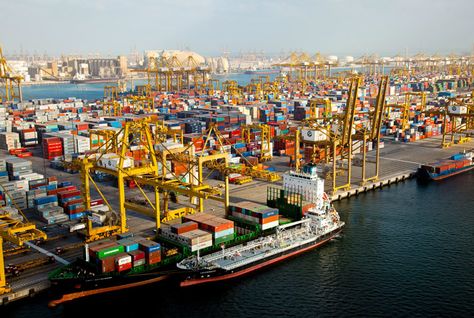The UAE industrial market has continued to show a relatively steady performance despite the emergence of economic headwinds, according to real estate consultancy firm CBRE.
Its H1 2016 UAE Industrial & Logistics MarketView report said the softening of crude oil prices over the past 18 months has had mixed effects on the UAE industrial sector.
This is largely due to the differing economic drivers of the two Emirates, with Abu Dhabi driven primarily by the oil and gas sector, while Dubai’s is more diversified and reliant on the import-export market.
Mat Green, head of Research & Consulting UAE, CBRE Middle East, said: “While enquiries from downstream and upstream petroleum companies and its allied sectors have dropped away in recent quarters, this drop has been balanced by enquiries from international occupiers, which have remained relatively steady during the same period.”
The UAE government aims to raise the industrial sector’s contribution to around 20 percent by 2020, as it strives to further diversify the national economy to limit the negative impact of future fluctuations in the hydrocarbon sector.
The CBRE report said that in Dubai falling oil prices have diminished consumer and investor confidence, with the overall average rental rate for warehousing within CBRE’s basket of industrial locations remaining flat in the past 12 months.
This is driven by a lack of high quality warehousing supply, constraining occupier movement, with low vacancy levels in this segment reflecting sustained demand for well-located and high quality facilities, such as Jebel Ali Port and Dubai International Airport.
The report said Jebel Ali Free Zone Authority (JAFZA) has witnessed year-on-year increase in rents of around 3 percent while capital values have fallen by close to 15 percent year on year for class 1 industrial assets.
“Whilst overall demand levels have remained steady during the first half of 2016, there has been a noticeable increase in demand for warehousing facilities from the food and beverage sector, as well as global fashion/retailers, while global automobile majors continue to show demand for creating regional hubs within free zones for training, research centres and regional parts storage hubs,” CBRE said.
In Abu Dhabi, the report said lower oil prices and the reduced investment in oil exploration, has led to a significant dip in demand from downstream and upstream petrochemical companies over the past 18 months. Cost-reduction measures are also noticeably in force with curbs on non-essential spending.
Occupiers, particularly in the oil and gas sector, have been evaluating the possibility of sub-leasing and selling excess capacity wherever possible to help streamline operations, it added.
Reflective of the economic backdrop, the total number of industrial enquiries has reduced year-on-year, CBRE said.
The report said the industrial and logistics sector in Dubai is expected to remain relatively resilient in the face of weakening supply from oil and gas occupiers.
However, CBRE said it expects to see a two-tiered market emerge, with prime and high quality industrial spaces outperforming the wider market, maintaining rentals and encouraging further tenant migration, whilst inferior products and aging and secondary locations are likely to face a period of declining rentals and rising vacancy rates.
With a greater reliance on the oil and gas sector, market rents in Abu Dhabi are expected to decline further, with an increase in vacancy rates also likely amidst the delivery of new supply across major industrial locations, the report said.
All rights reserved to the initial publisher for gulfnews.com
Collected and published by Arms &McGregor International Realty® editorial team. Get in touched with us at [email protected]

